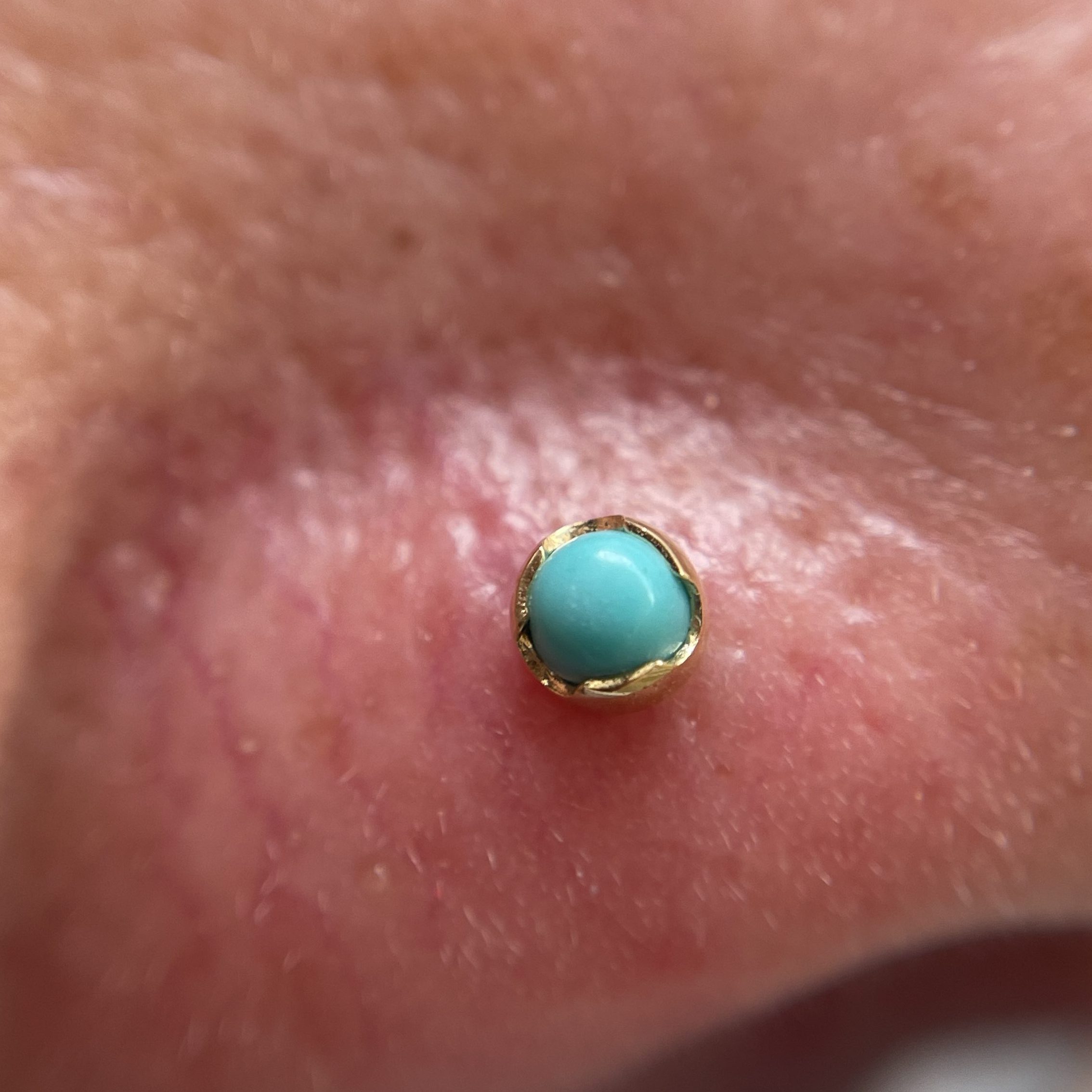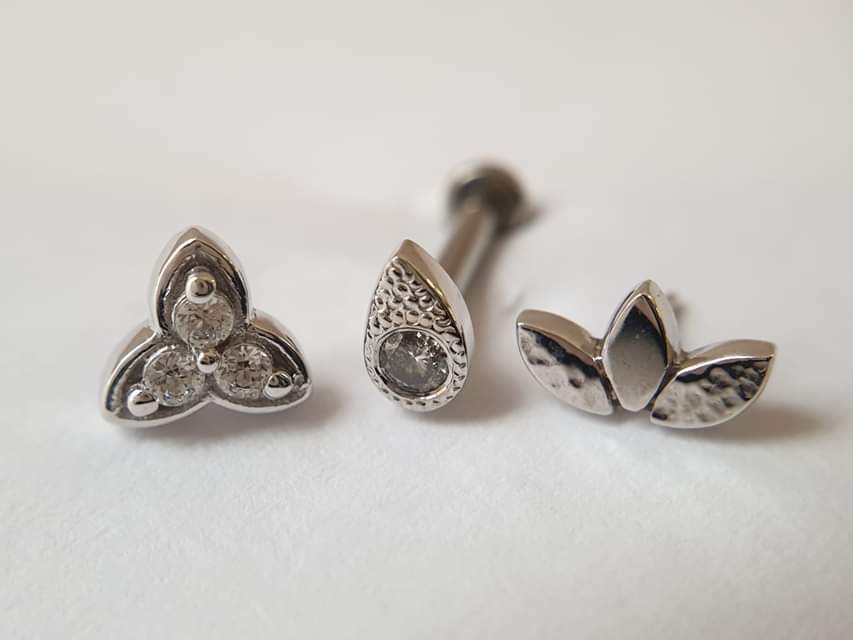
December is officially Holiday season, and all over the world people will be celebrating their own holidays in their own special way. This month, we are looking at 3 special gemstones to commemorate you December babies. Turquoise, Tanzanite, and Zircon are three beautiful December birthstone that vary in their hues of blue, which is perfect for that cold chill of December!
Three Birthstones?
The majority of months know how to celebrate with their stones by having multiple stones. December is one of two months that decided to ramp it up to three for an extra kick – So what options do you have for the December birthstone?
For the months that are lucky enough to have more than a singular birthstone, these are separated into two lists: Modern and Traditional. The more common of the two is the modern birthstones, which were defined in 1912 by the Jewelers of America in an attempt to standardise (and commercialise) birthstones. This was further updated in the 1950s, to include gemstones such as Citrine for November, or Alexandrite for June. Modern stones are based on what’s easier to sell in large quantities (making it the more affordable choice). Turquoise is Decembers traditional stone, with Tanzanite and Zircon being the more modern and newer stones.
Whatever your style, budget, taste or preferences are, there is definitely something for all you cold December babies.
Turquoise!
Turquoise is well known for it’s bright blue colour! With shades ranging from sky blue to apple green, and its standout veins of matrix (black, brown or grey remnants of the rock it was formed in), it’s no shock that Turquoise is very well recognised. Turquoise is formed when mineral-rich water seeps in-between the gaps of rocks, and over time the water dissolves, leaving only behind the formed minerals, i.e. Turquoise. The minerals left that form the stone, are the ones that give it its colour. For example, copper gives turquoise its shades of green and blue.

There is an assumption that the gemstones name can be translated to ‘Turkish Stone’ which hints that this is where it may have first been found. If it was, it definitely didn’t stay there long. Apparently they were buried (and later found) in the mines in The Sinai Peninsula of Egypt, which date back to as early as 4000 BC. This makes Turquoise one of the oldest gemstones in history.
The ‘sky blue’ stones were originally sourced in Ancient Persia (now Iran) are often still referred as ‘Persian Blue’. The U.S is currently the biggest supplier of Turquoise, where most production comes from Arizona and Nevada. The ‘Kingman mine’ in Arizona is a historically important source that is known for producing intense blue turquoise. Although it is no longer open for turquoise mining, Arizona’s ‘Sleeping Beauty’ mine was a prolific producer for more than four decades.

For centuries, Turquoise has believed to be a protective stone, often being worn as amulets. From the 13th Century it was believed that the stone would protect its wearer from falling (particularly, falling off of horses. We’re not sure how relevant this is these days…), as well as the common belief that the stone would break into many pieces at the face of danger. There are also many other beliefs, such as the guarantee of good health and fortune. Hindu mystics maintained that seeing a turquoise stone after beholding the new moon ensured fantastic wealth. Turquoise was often seen through many royal families, such as the Duchess of Windsor who wore a beautiful Amethyst and Turquoise necklace. Queen Mary had a collection of Persian turquoise jewellery, including a tiara, necklace, brooch, and earrings. The Persian Turquoise Tiara was eventually passed down to Princess Margaret, who wore it until her death in 2002. In the modern day, Turquoise is also the gem of the 11th wedding anniversary.
On The Moh’s scale of hardness, Turquoise is typically around 5-6, although some Turquoise is treated to improve its durability. Turquoise can be dyed or chemically enhanced by adding an epoxy or acrylic resin for greater hardness or better colour. Typically, Turquoise is pretty durable when it comes to light, but can be sensitive to high heat , which can cause discolouration or breakage. It is for this reason hat Turquoise stones should not be cleaned with steam or an ultrasonic. Acids, chemicals, and cosmetics can also damage or discolour your stone. The best method of cleaning is warm soapy water.
A large amount of Turquoise is synthetic these days – This improves it’s day-to-day wearability!
Tanzanite!
Tanzanite is the newest addition to the December birthstone, being the first gemstone added to the official birthstone list in almost 100 years. It is one of the most fascinating gem discoveries of the 20th century. Harry Platt (the president of Tiffany and Co.) stated: “The most Beautiful stone to be discovered in 200 years. And honestly, we might have to agree. Often described as ‘velvety’, Tanzanite comes in an array of shades, ranging from pastel and pale lilac, to rich blues, flirting with violets, lavender and cornflower blue hues on its way. In 1968, Tiffany and Co. became the biggest distributor of Tanzanite, advertising of its vivid colours, high clarity, and ability for larger cuts, caused this stone to rise massively in popularity.
Tanzanite is one of the most unique and rare gemstones we have, and works perfectly as the December birthstone. It was formed over 500 years ago under extreme geological conditions that are seen as completely unique. It is also only found in one small area of the foothills of the mountain it was discovered, and to be found anywhere else it is believed to have a on “one in a million” chance. In 1967 it was discovered in the “Merelani Hills” . It is believed that sometime in the future, we will have completely run out of this stone.
Most of the Tanzanite found on the market is actually heat treated, to enhance the blue/violet hues and remove the brown that is naturally found. The colouring of this is permanent, and there is no durability concerns. The stone typically ranges around 6-7 on the Mohs scale of hardness and is resistant to normal heat, light and chemicals. But if exposed to very sudden high or rapid changes in heat, it can cause the gem to crack. Ultrasonic and steam cleaners are not recommended to be used to clean this stone, and therefore the best option is warm soapy water.
The below photos were kindly borrowed to us by the amazing Becky Crossan at Inkhaus Piercing!
Zircon!
Zircon is a classic gemstone, that has often caused confusion with synthetic Cubic Zirconia due to its similar name. Very few people realise that it is its own special naturally formed gemstone which ranges in a fantastic array of colours. The broad colour palette of this December birthstone includes red, blue, orange, yellow, brown and green. It is well known for its intense flashes of multicoloured light (called fire), and its brilliance. This resulted in Zircon being confused with diamonds for centuries.
Zircon is one of the many gems that are found in Sri Lanka. It is often found close by to Sapphire sources, so in addition to Sri Lanka, it is also found in Vietnam, Cambodia and Australia. Mining for Zircon in Australia dates back 4.4 billion years, possibly making it the oldest mineral as a gemmological found. Australia’s Hart Range is most commonly known for producing the Zircon birthstones in yellow and brown, however Australia dominates in Zircon mining, producing 37% of the worlds supply.
During history, Zircon has had many symbolic beliefs attached to it. In the middle ages, the most common belief was that it would help lull people into a deep and peaceful sleep, while getting plenty of rest. There were other beliefs during that time, such as Zircon bringing forth good fortune and warding away evil spirits. The ‘luck’ associated with Zircon is said to present itself in different ways. For example, it is often believed that Zircon will promote discipline and self confidence, thus leading to better opportunities.
Zircon ranges from 6 to 7.5 on the Mohs scale. It is often heat treated to produce blue and colourless varieties, as well as orange, yellow and red. The gem is typically stable when exposed to light, but after prolonged exposure to bright light some heat-treated stones may revert back to their original colours (which is usually a light-ish brown). Exposure to heat can alter the colour of some zircon. Because zircon tends to wear away or chip by friction, it is best to avoid wearing it in rough conditions, such as gardening, playing sports or doing dishes. Cleaning your zircon using a soft brush and mild soap in warm water is the best method. Ultrasonic and steam cleaners are not recommended for this December birthstone.
We stock jewellery from brands from across the world such as the December Birthstone, and can source items in all birthstones imaginable! If you would like to treat yourself to some meaningful pieces, just get in contact with us.
Make sure to follow us on social media for regular updates, and keep an eye out as we post new blogs every single Friday!










